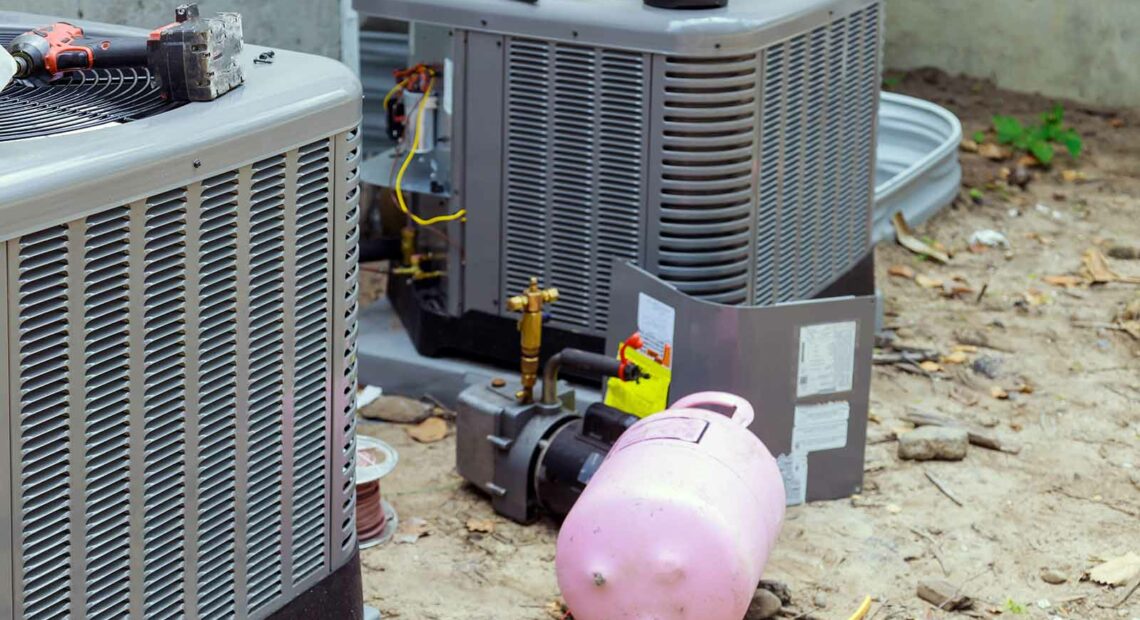Understanding Freon: A Closer Look at its Composition and Function

When it comes to refrigeration and air conditioning systems, you might have heard the term “Freon” being used. Freon is a brand name that has become synonymous with refrigerants, which are crucial components in these systems. In this blog post, we will explore what Freon is, its composition, and how it works to enable cooling and air conditioning.
What is Freon? Freon is a registered trademark of The Chemours Company, formerly a part of DuPont. It refers to a class of refrigerants known as chlorofluorocarbons (CFCs) or hydrochlorofluorocarbons (HCFCs). These chemicals were commonly used as refrigerants in various cooling systems, including air conditioners, refrigerators, and freezers.
Composition of Freon: The exact composition of Freon can vary depending on the specific type or variant. However, the general structure of Freon molecules consists of carbon, hydrogen, chlorine, and fluorine atoms. CFCs contain only carbon, chlorine, and fluorine, while HCFCs have an additional hydrogen atom. The unique arrangement of these atoms gives Freon its desirable properties for cooling purposes.
Working Principle of Freon: To understand how Freon works, we need to delve into the principles of refrigeration. The fundamental concept behind cooling is the removal of heat energy from a particular space or object. Freon enables this process through a cycle known as the vapor compression cycle.
- Compression: The Freon refrigerant enters the compressor as a low-pressure gas. The compressor’s main function is to raise the pressure and temperature of the refrigerant gas.
- Condensation: The high-pressure, high-temperature Freon gas moves to the condenser coils, where it releases heat to the surroundings. As a result, the gas condenses into a high-pressure liquid.
- Expansion: The high-pressure liquid Freon then enters the expansion valve, which reduces its pressure. This causes the refrigerant to rapidly expand, resulting in a drop in temperature.
- Evaporation: The low-pressure, low-temperature Freon now enters the evaporator coils, where it absorbs heat from the surrounding area (e.g., the air in an air conditioning unit). This heat absorption causes the Freon to evaporate into a gas again.
- Return to Compressor: The gaseous Freon goes back to the compressor, and the cycle repeats.
Environmental Concerns and Alternatives: While Freon-based refrigerants were widely used in the past due to their excellent properties, it was discovered that they contribute to ozone depletion in the Earth’s atmosphere. Consequently, the production of many CFCs and HCFCs, including several Freon variants, has been phased out or heavily restricted globally.
Today, hydrofluorocarbons (HFCs) are commonly used as alternatives to Freon. HFCs do not deplete the ozone layer, but they have a high global warming potential. As a result, there is ongoing research and development to find more environmentally friendly refrigerants with lower global warming potential.
Conclusion: Freon, a class of refrigerants commonly used in cooling systems, is known for its ability to enable the cooling and air conditioning processes. While its usage has been phased out due to environmental concerns, it played a significant role in advancing refrigeration technology. Understanding the composition and working principles of Freon provides valuable insights into the science behind cooling systems and the ongoing efforts to develop more sustainable alternatives.
Picture Courtesy: Google/images are subject to copyright








